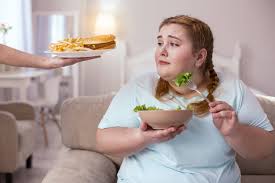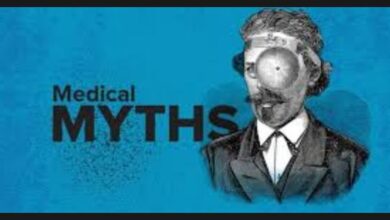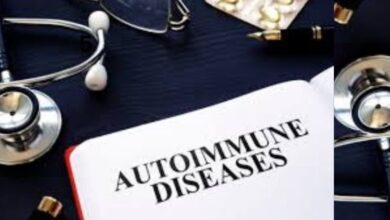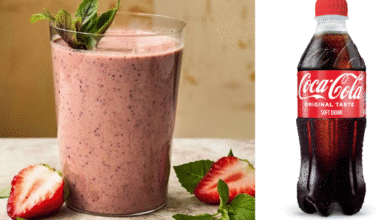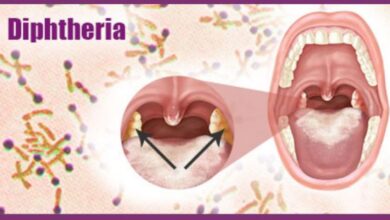Eating Fat Doesn’t Make You Fat—The Real Culprit Behind Weight Gain
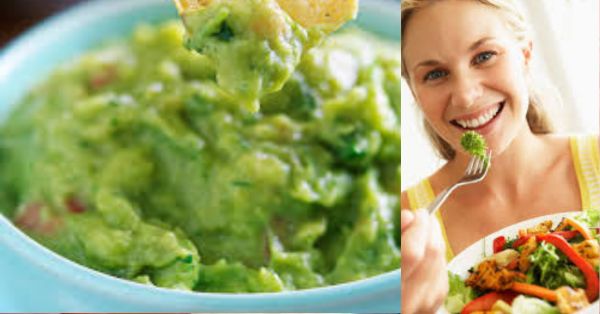
Eating Fat Doesn’t Make You Fat—The Real Culprit Behind Weight Gain – We’ve been told: “Eat low-fat to stay lean.” Grocery stores responded with a parade of low-fat everything—from cookies to yogurt. Meanwhile, obesity rates skyrocketed.
Something’s not adding up.
Here’s the hard truth: eating fat doesn’t make you fat. In fact, your body needs fat. The real enemy behind your stubborn weight gain? It’s not butter. It’s not avocados. It’s not that drizzle of olive oil.
It’s something sneakier, more addictive, and pumped into just about every processed food on the shelves.
Let’s dive in and expose the real culprit.
Fat Was Framed—And We Fell For It
The anti-fat craze started in the late 1970s when dietary guidelines began pointing the finger at saturated fat and cholesterol. “Avoid fat to prevent heart disease,” they said. “Switch to margarine,” they said.
What they didn’t mention? Most of those studies were observational, not causal. And many were influenced by politics and food industry giants.
We took fat off our plates—and filled the void with refined carbs and sugar.
The result? Our plates got “healthier,” but our waistlines grew. Diabetes soared. And the very heart disease we were trying to avoid? Still the leading cause of death.
Here’s the kicker: your body is incredibly smart. Fat is essential for hormone production, brain function, cell health, and even burning more fat. That’s right—fat helps burn fat when consumed the right way.
So, What’s Actually Making Us Fat?
If it’s not fat, then what is it?
Refined Carbs and Added Sugars
This is the real monster in the closet.
White bread. Sugary cereals. Soda. Granola bars pretending to be healthy. These foods digest fast, spike your blood sugar, and send your insulin levels into overdrive.
Why does that matter?
Because insulin is your fat-storing hormone. Every time it spikes, your body gets the signal: “Store this energy as fat.” Do it repeatedly, and your fat-burning switch flips off. Your body becomes a storage machine.
Worse? Those blood sugar crashes leave you hungry again in an hour, craving—you guessed it—more sugar.
It’s a vicious cycle that leaves you tired, bloated, and constantly snacking.
Fat Keeps You Full. Sugar Makes You Snack.
Here’s the difference between eating a breakfast of eggs and avocado toast versus a low-fat fruit yogurt with a banana.
One keeps you satisfied for hours. The other leaves you raiding the pantry by 10 a.m.
Why?
Because dietary fat slows digestion, stabilizes blood sugar, and triggers hormones that say, “Hey, I’m full.” On the other hand, sugary, carb-heavy meals give you a quick hit—then crash.
It’s not about calories in versus calories out. It’s about hormones. It’s about how your body responds to what you eat.
The Low-Fat Diet Wasn’t Just Ineffective—It Was Dangerous
When we stripped fat out of food, we had to make it taste like something.
So manufacturers added sugar, starches, and synthetic fillers to create flavor. That “healthy” low-fat yogurt? Often packed with 20+ grams of sugar—more than a Twinkie.
This shift didn’t just make us fatter. It messed with our metabolism and damaged our relationship with real food.
People became scared of whole foods like nuts, egg yolks, and full-fat dairy—all of which are nutrient-rich and deeply satisfying.
Meanwhile, they loaded up on “fat-free” cookies and 100-calorie snack packs. Spoiler: it didn’t work.
Good Fats vs. Bad Fats: Know the Difference
Let’s be clear—not all fats are created equal. Just like carbs can be whole (like oats and sweet potatoes) or refined (like white bread and candy), fats can be nourishing or harmful.
Here’s the breakdown:
Good Fats (Eat These Often):
-
Monounsaturated fats: olive oil, avocados, almonds, peanuts
-
Polyunsaturated fats: fatty fish like salmon, flaxseeds, walnuts
-
Saturated fats (in moderation): grass-fed butter, coconut oil, whole eggs
These fats support brain function, lower inflammation, and help your body absorb key vitamins like A, D, E, and K.
Bad Fats (Avoid These):
-
Trans fats: hydrogenated oils, margarine, many packaged baked goods
-
Highly processed vegetable oils: soybean oil, corn oil, canola oil (especially when heated repeatedly)
These fats have been linked to inflammation, heart disease, and obesity. Many are chemically altered and your body doesn’t process them well.
Why You’re Gaining Weight Even When You Eat “Healthy”
Ever eat a “healthy” granola bar and still feel hungry? Or opt for a salad—but low-fat dressing, no cheese, no egg—only to binge on chips later?
You’re under-fueling. You’re not giving your body the fat it needs to feel full, build hormones, and stabilize energy.
Here’s the other thing: too many people are eating “low-fat” but high-sugar diets and calling it healthy.
Fruit smoothies. Flavored yogurts. Whole grain crackers. All fine in moderation—but not if they’re your staples and they’re sugar bombs in disguise.
What Happens When You Add Fat Back In?
Here’s the magic:
-
Your cravings drop. Seriously. When you eat more fat and fewer refined carbs, your hunger signals regulate naturally.
-
You stay full longer. No more hangry 4 p.m. snack attacks.
-
Your body starts burning fat for fuel. Especially when combined with fewer carbs, your body shifts into a more efficient energy-burning mode.
-
Your brain works better. Your brain is made up of nearly 60% fat. Feed it what it’s made of.
In fact, many people who switch to a higher-fat, lower-sugar diet report better focus, mood, sleep, and weight loss—without counting calories.
How to Start Eating Fat Without Fear
You don’t have to go full keto. You just need to be intentional about the type of fat you eat and what you cut out.
1. Ditch the low-fat marketing traps.
If it says “low-fat,” check the label. There’s a good chance it’s loaded with sugar or starch to make up for lost flavor.
2. Add a healthy fat to every meal.
-
Breakfast: Scrambled eggs with avocado
-
Lunch: Salad with olive oil and a boiled egg
-
Dinner: Grilled salmon with steamed veggies and a pat of butter
-
Snacks: A handful of almonds or full-fat Greek yogurt
3. Reduce refined carbs and sugar.
Start with the obvious: sugary drinks, pastries, candy. Then tackle the less obvious: white bread, pasta, sweetened “health” snacks.
4. Don’t fear saturated fat—in moderation.
The research is clear: saturated fat is not the villain it was once thought to be. In reasonable amounts from real food sources, it can be part of a healthy, fat-burning diet.
Final Thoughts: The Fat Truth You Can’t Ignore
We’ve been misled for years.
The idea that fat makes you fat is outdated, oversimplified, and flat-out wrong. The real culprits? Excess sugar, ultra-processed carbs, and the chronic insulin spikes they cause.
It’s time to rethink everything we thought we knew about dieting. Not just for weight loss—but for energy, hormone health, longevity, and confidence.
When you stop fearing fat and start embracing real, whole foods, something powerful happens. You feel better. You eat less. You crave less. And your body finally starts working with you, not against you.
So go ahead—drizzle that olive oil, enjoy those eggs, savor that full-fat yogurt.
Because fat isn’t your enemy. It’s your ally.

